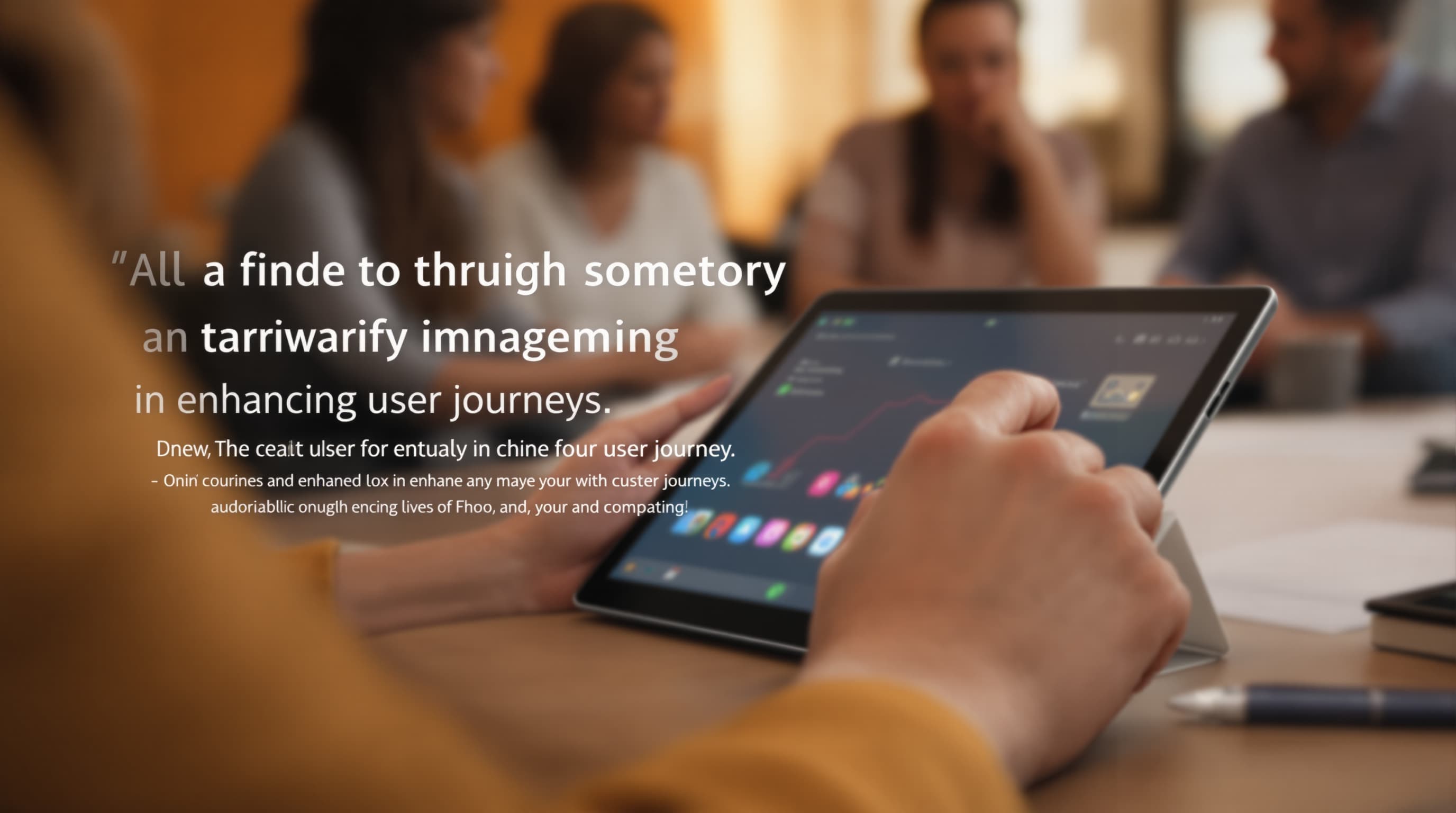Optimizing for Engagement: Enhancing User Journeys Through Personalized Form Interactions


In an era where every interaction counts, optimizing user engagement is paramount for businesses looking to connect meaningfully with their audience. Forms, often seen as mundane or purely functional, can become powerful tools for enhancing the user journey when personalized and strategically implemented. This post explores the transformative potential of personalized form interactions and offers insights into how you can optimize these elements to boost engagement and drive results.
Why Personalization Matters
Personalization speaks to the core of human interaction. It makes users feel valued and understood, fostering a sense of connection and loyalty. When applied to forms, personalization can significantly enhance user experience, leading to higher completion rates and more meaningful data collection. Here are some compelling reasons why personalized form interactions are vital:
- Increased Engagement: Personalized forms capture attention and encourage users to engage more deeply, as they feel the form is tailored specifically for them.
- Improved Data Accuracy: By asking relevant and personalized questions, you increase the likelihood of receiving accurate and useful responses.
- Enhanced User Experience: Personalization reduces friction, making the form-filling process smoother and more intuitive.
- Higher Conversion Rates: When users feel understood, they are more likely to complete forms, leading to higher conversion rates.
Crafting the Perfect Personalized Form
Creating a personalized form involves a strategic blend of design, content, and technology. Here are some steps to ensure your forms are optimized for engagement:
Understand Your Audience
Before you can personalize, you need to understand who you're personalizing for. Conduct thorough research to gather insights about your audience:
- Demographics: Age, gender, location, and other demographic factors can influence how a form should be tailored.
- Behavioral Data: Analyze how users interact with your site or app to identify their preferences and pain points.
- Feedback and Surveys: Use existing forms or surveys to gather feedback on what users like or dislike about their current experience.
Design with User Experience in Mind
A well-designed form is intuitive and easy to navigate. Here are some design principles to consider:
- Simplicity is Key: Avoid overwhelming users with too many fields. Keep forms concise and focused on essential information.
- Responsive Design: Ensure your forms are mobile-friendly, providing a seamless experience across all devices.
- Visual Hierarchy: Use contrasting colors, bold fonts, and strategic placement to guide users through the form.
Leverage Technology for Personalization
Technology plays a crucial role in enabling personalized form interactions. Here's how you can leverage it:
- Conditional Logic: Use conditional logic to show or hide fields based on user responses, making the form more relevant and less cluttered.
- Pre-fill Data: Autofill known information to save users time and reduce friction.
- Integrate Analytics: Utilize tools like Google Analytics to track how users interact with your forms and identify areas for improvement.
Content that Resonates
The wording and tone of your form can significantly impact user engagement. Here are some tips for crafting compelling content:
- Use Conversational Language: Write as if you're speaking directly to the user. This approach makes the form feel more personal and less transactional.
- Clear Instructions: Provide clear guidance on how to complete the form, reducing confusion and abandonment rates.
- Personalize Greetings and Closings: Use the user's name or other personalized elements to create a warm and welcoming experience.
Measuring Success and Iterating
To ensure your personalized forms are effective, it's crucial to measure their performance and make data-driven improvements. Here’s how you can do it:
- Set Clear Goals: Define what success looks like for your forms, whether it’s higher completion rates, more accurate data, or increased conversions.
- A/B Testing: Experiment with different form designs, content, and personalization strategies to see what resonates best with your audience.
- Analyze and Adapt: Regularly review form analytics to identify trends and areas for improvement. Use this data to refine your approach continually.
Bringing It All Together
Personalized form interactions are more than just a trend—they're a necessity for businesses looking to deepen user engagement and enhance the overall user journey. By understanding your audience, designing with intention, leveraging technology, and crafting resonant content, you can create forms that not only capture data but also build relationships.
Summary
Optimizing forms for engagement through personalization is a strategic endeavor that requires a keen understanding of your audience, thoughtful design, and the right technological tools. By following these steps, you can transform your forms into powerful engagement tools that drive meaningful interactions and business outcomes.
Take the First Step
Ready to enhance your user journeys? Start by evaluating your current forms and identifying areas for personalization. Try Ezpa.ge to create stunning, responsive forms that captivate and convert. With features like customizable themes, mobile optimization, and real-time Google Sheets syncing, Ezpa.ge makes it easy to build forms that are not only functional but also engaging and personalized.
Let's transform your form-filling experience and unlock the true potential of user engagement.